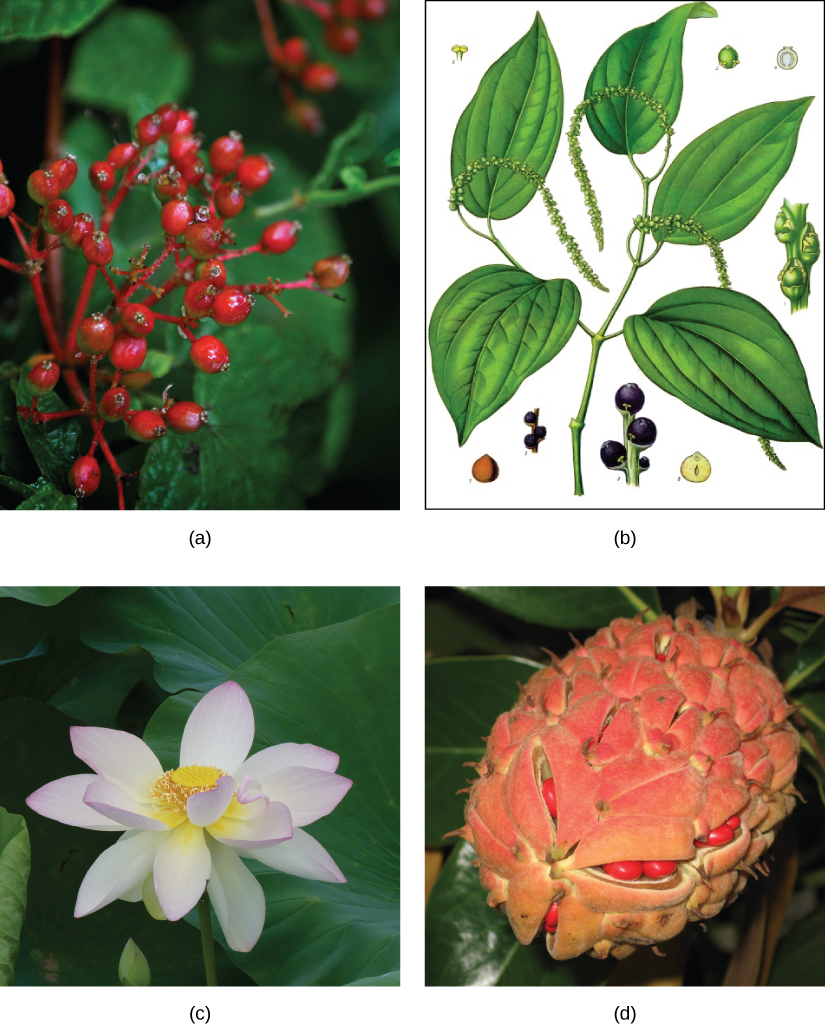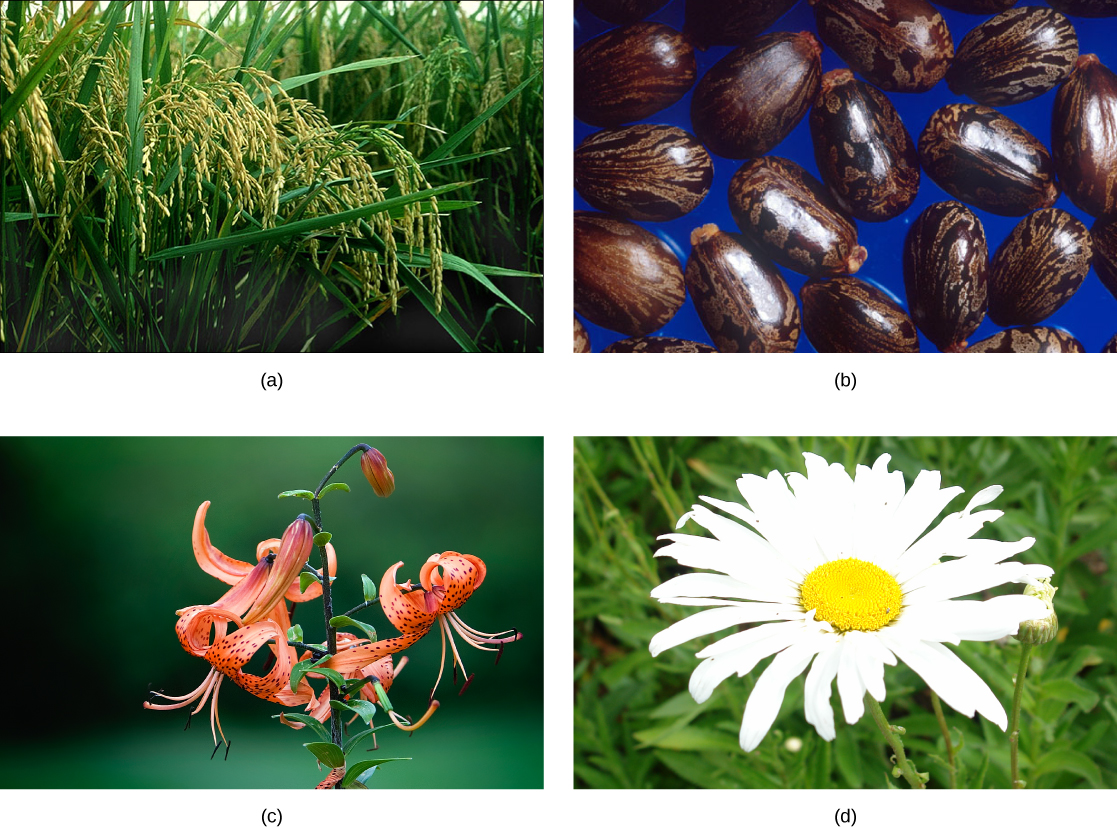| << Chapter < Page | Chapter >> Page > |
The Magnoliidae are represented by the magnolias: tall trees that bear large, fragrant flowers with many parts, and are considered archaic ( [link] d ). Laurel trees produce fragrant leaves and small inconspicuous flowers. The Laurales are small trees and shrubs that grow mostly in warmer climates. Familiar plants in this group include the bay laurel, cinnamon, spice bush ( [link] a ), and the avocado tree. The Nymphaeales are comprised of the water lilies, lotus ( [link] c ), and similar plants. All species of the Nymphaeales thrive in freshwater biomes, and have leaves that float on the water surface or grow underwater. Water lilies are particularly prized by gardeners, and have graced ponds and pools since antiquity. The Piperales are a group of herbs, shrubs, and small trees that grow in tropical climates. They have small flowers without petals that are tightly arranged in long spikes. Many species are the source of prized fragrances or spices; for example, the berries of Piper nigrum ( [link] b ) are the familiar black pepper that is used to flavor many dishes.

Plants in the monocot group have a single cotyledon in the seedling, and also share other anatomical features. Veins run parallel to the length of the leaves, and flower parts are arranged in a three- or six-fold symmetry. The pollen from the first angiosperms was monosulcate (containing a single furrow or pore through the outer layer). This feature is still seen in the modern monocots. True woody tissue is rarely found in monocots, and the vascular tissue of the stem is not arranged in any particular pattern. The root system is mostly adventitious (unusually positioned) with no major taproot. The monocots include familiar plants such as the true lilies (not to be confused with the water lilies), orchids, grasses, and palms. Many important crops, such as rice and other cereals ( [link] a ), corn, sugar cane, and tropical fruit, including bananas and pineapple, belong to the monocots.

Eudicots, or true dicots, are characterized by the presence of two cotyledons. Veins form a network in leaves. Flower parts come in four, five, or many whorls. Vascular tissue forms a ring in the stem. (In monocots, vascular tissue is scattered in the stem.) Eudicots can be herbaceous (like dandelions or violets), or produce woody tissues. Most eudicots produce pollen that is trisulcate or triporate, with three furrows or pores. The root system is usually anchored by one main root developed from the embryonic radicle. Eudicots comprise two-thirds of all flowering plants. Many species seem to exhibit characteristics that belong to either group; therefore, the classification of a plant as a monocot or a eudicot is not always clearly evident ( [link] ).
| Comparison of Structural Characteristics of Monocots and Eudicots | ||
|---|---|---|
| Characteristic | Monocot | Eudicot |
| Cotyledon | One | Two |
| Veins in leaves | Parallel | Network ( branched) |
| Vascular tissue | Scattered | Arranged in ring pattern |
| Roots | Network of adventitious roots | Tap root with many lateral roots |
| Pollen | Monosulcate | Trisulcate |
| Flower parts | Three or multiple of three | Four, five, multiple of four or five and whorls |
Explore this website for more information on poillinators.
Angiosperms are the dominant form of plant life in most terrestrial ecosystems, comprising about 90 percent of all plant species. Most crop and ornamental plants are angiosperms. Their success results, in part, from two innovative structures: the flower and the fruit. Flowers are derived evolutionarily from modified leaves. The main parts of a flower are the sepals and petals, which protect the reproductive parts: the stamens and the carpels. The stamens produce the male gametes, which are pollen grains. The carpels contain the female gametes, which are the eggs inside ovaries. The walls of the ovary thicken after fertilization, ripening into fruit that can facilitate seed dispersal.
Angiosperms’ life cycles are dominated by the sporophyte stage. Double fertilization is an event unique to angiosperms. The flowering plants are divided into two main groups—the monocots and eudicots—according to the number of cotyledons in the seedlings. Basal angiosperms belong to a lineage older than monocots and eudicots.
[link] If a flower lacked a megasporangium, what type of gamete would it not be able to form? If it lacked a microsporangium, what type of gamete would not form?
[link] Without a megasporangium, an egg would not form; without a microsporangium, pollen would not form.

Notification Switch
Would you like to follow the 'Concepts of biology' conversation and receive update notifications?